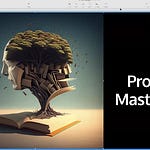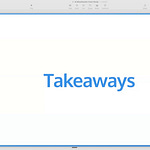Class Overview
This week's class focused on evolving from simple prompt sharing to building sophisticated AI-first systems that position you as an indispensable thought leader. More specifically, this session revealed the strategic frameworks that separate successful AI thought leaders from the crowded field of tactical prompt sharers.
The discussion went deep into positioning strategy—not just what prompts to share, but how to carve out your unique lane in an increasingly competitive landscape. We explored the critical difference between external market fit and internal resonance, and why the most successful prompt leaders have found ways to align their deepest curiosities with genuine market needs.
Furthermore, we talked about emerging white spaces. One of the biggest of these is the new Claude Artifacts gallery:
Claude artifacts help you evolve from simple text outputs into interactive, functional applications. Instead of just sharing static advice, we can now easily create living, breathing tools that people interact with directly.
We also dove into the psychology of positioning yourself at different levels of complexity. While most prompt sharers focus on tactical advice (the "do this one thing" approach), the real leverage comes from understanding mental models and paradigmatic thinking. This is where the competition thins out dramatically, and where you can create a profound, lasting impact on people's lives.
During the class, I also shared automation workflows that I’m creating, showing how individual prompts can be woven together into sophisticated systems that deliver results far beyond what any single prompt could achieve. We examined real examples from practitioners who've built thriving communities around their automation systems, including detailed breakdowns of their content strategies and business models.
What We Covered During the Class:
Explored different positioning strategies - functional, emotional, social, and cognitive approaches
Discovered Claude Artifacts gallery - interactive prompts that go beyond text
Analyzed successful automation workflows - from simple prompts to complex systems
Examined video-first content strategies - walking through prompts with personality
Discussed internal vs external resonance - aligning authenticity with market needs
Shared connoisseurship frameworks - analyzing what makes content compelling
Explored prompt system architectures - connecting individual prompts into workflows
Investigated role-playing simulations - interactive learning through AI characters
Analyzed real automation examples - make.com workflows and practical implementations
Covered standing out strategies - from tactical advice to paradigmatic thinking











